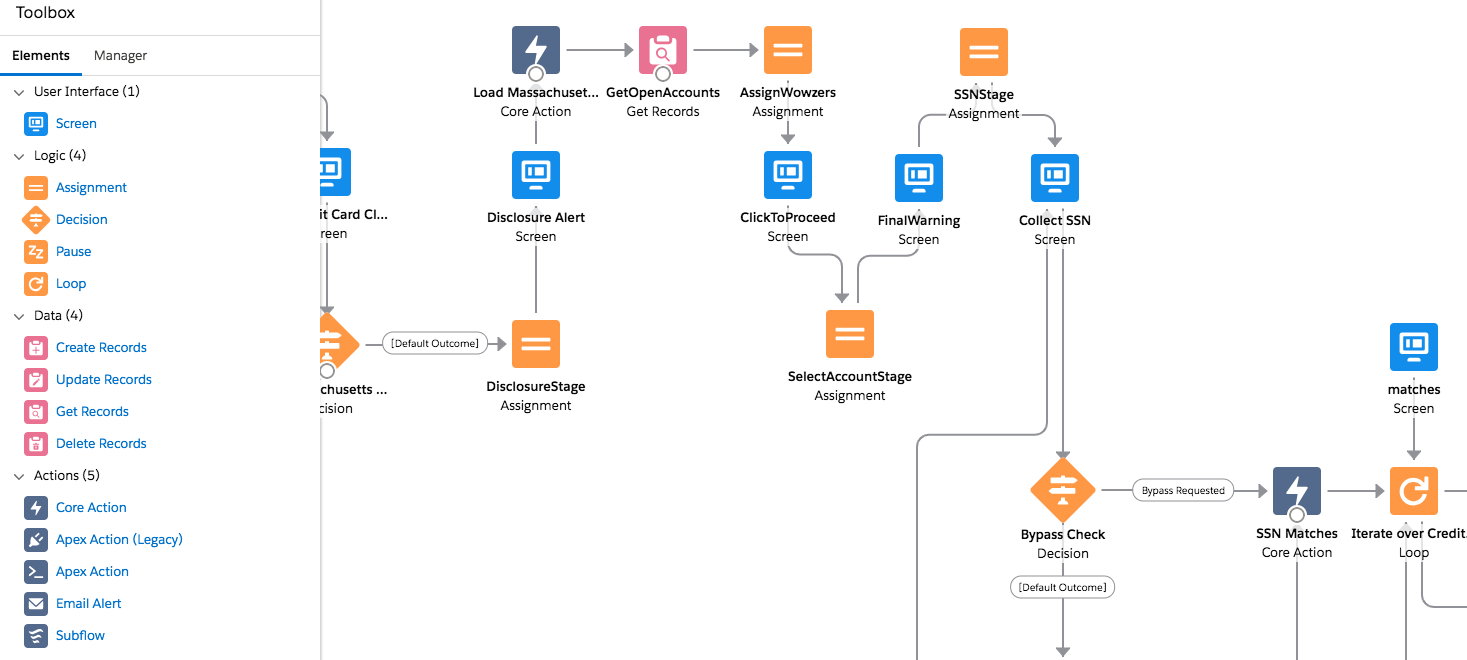In the ever-evolving world of customer relationship management (CRM) software, Salesforce stands tall as a leader. Among the myriad of powerful features it offers, Salesforce Flow emerges as a versatile tool that streamlines processes, empowers automation, and enhances the user experience. In this blog, we will explore the advantages of using Salesforce Flow and how it can revolutionize your organization’s efficiency and productivity.
Process Automation and Simplified Workflows:
Salesforce Flow enables businesses to automate complex business processes with ease. It provides a visual interface that allows users to create and design flows, simplifying the way data is collected, updated, and processed. With Flow, you can automate repetitive tasks, enforce data consistency, and eliminate manual errors, freeing up valuable time for your teams to focus on high-value activities.
Seamless Integration:
Salesforce Flow seamlessly integrates with other Salesforce features and functionalities, as well as external systems. This integration capability allows you to connect with various data sources, such as databases, external APIs, or custom applications. By leveraging Flow’s integration capabilities, you can consolidate data from multiple systems, enabling a holistic view of your customer interactions and facilitating data-driven decision-making.
Enhanced User Experience:
User experience is a critical aspect of any software application, and Salesforce Flow excels in providing a rich and intuitive experience for both administrators and end-users. With its drag-and-drop interface, Flow empowers administrators to create visually appealing and user-friendly screens, making it easier for end-users to navigate through complex processes. Additionally, Flow supports responsive design, enabling a consistent experience across multiple devices, further enhancing user satisfaction.
Real-time Collaboration and Approval Processes:
Flow enables real-time collaboration among team members, allowing them to work together seamlessly on process design, modifications, or troubleshooting. It offers robust approval functionality, enabling the creation of automated approval processes with multiple stakeholders. These features not only enhance efficiency but also improve transparency and accountability within the organization.
Flexibility and Customization:
Salesforce Flow provides a high degree of flexibility and customization options. It allows you to design flows that align with your specific business requirements and processes. From simple tasks like data validation to complex business logic, Flow can adapt to your organization’s unique needs. Moreover, Flow supports the use of custom code, empowering developers to extend its capabilities further.
Reporting and Analytics:
Flow integrates seamlessly with Salesforce’s reporting and analytics features. By leveraging Flow, you can capture and analyze data throughout the process, enabling you to gain valuable insights into process performance, identify bottlenecks, and drive continuous improvement. The ability to generate real-time reports and dashboards empowers you to make informed decisions and optimize your business processes.
Salesforce Flow offers a myriad of advantages for businesses seeking to optimize their CRM processes. By automating workflows, enhancing user experience, enabling real-time collaboration, and providing customization options, Flow empowers organizations to streamline operations, increase productivity, and drive customer success. Whether you’re a sales team, service organization, or a nonprofit, Salesforce Flow is a powerful tool that can revolutionize the way you interact with your customers, improve efficiency, and achieve your business goals. Embrace the power of Salesforce Flow and unlock the full potential of your CRM implementation.




